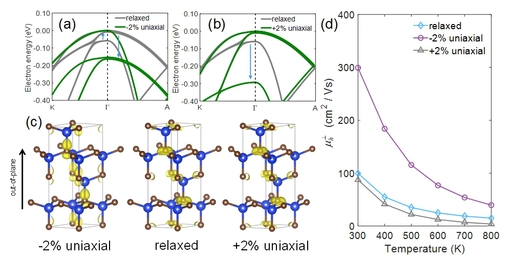Recently, the Micro-Nano Electromechanical Systems and Integrated Circuits team from the College of Mechanical Engineering at DHU made significant progress in the study of electronic transport properties in wide-bandgap semiconductors for power chips. Their work, titled “Giant Enhancement of Hole Mobility for 4H-Silicon Carbide through Suppressing Interband Electron–Phonon Scattering,” was published in Nano Letters and selected as the cover article. DHU is listed as the first institution, with doctoral student Sun Jianshi as the first author, and Professors Li Shouhang and Liu Xiangjun as co-corresponding authors. The research received important support from Professor Tong Zhen from Sun Yat-sen University, Researcher Shao Cheng from Shandong Academy of Advanced Technology, and Dr. Anmou from the University of Tokyo.


4H-silicon carbide (4H-SiC) possesses a high Baliga figure of merit, making it a promising material for power electronics. However, its applications are limited by low hole mobility. Herein, we found that the hole mobility of 4H-SiC is mainly limited by the strong interband electron–phonon scattering using mode-level first-principles calculations. Our research indicates that applying compressive strain can reverse the sign of crystal-field splitting and change the ordering of electron bands close to the valence band maximum. Therefore, the interband electron–phonon scattering is severely suppressed and the electron group velocity is significantly increased. The out-of-plane hole mobility of 4H-SiC can be greatly enhanced by ∼200% with 2% uniaxial compressive strain applied. This work provides new insights into the electron transport mechanisms in semiconductors and suggests a strategy to improve hole mobility that could be applied to other semiconductors with hexagonal crystalline geometries.

This research was supported by funding from the National Natural Science Foundation of China, the Shanghai Natural Science Foundation, the Shanghai Science and Technology Commission, Shanghai Huarhong Hongli Semiconductor Manufacturing Co., Ltd., and the Special Project for High-Level Innovative Talents at Donghua University.
